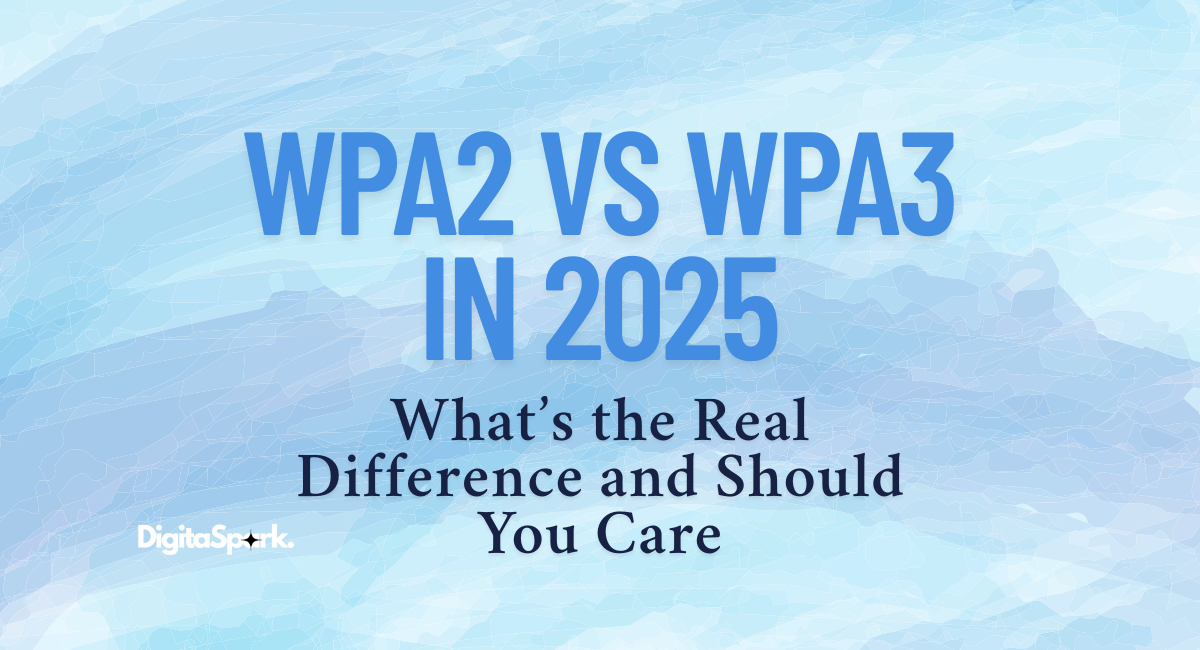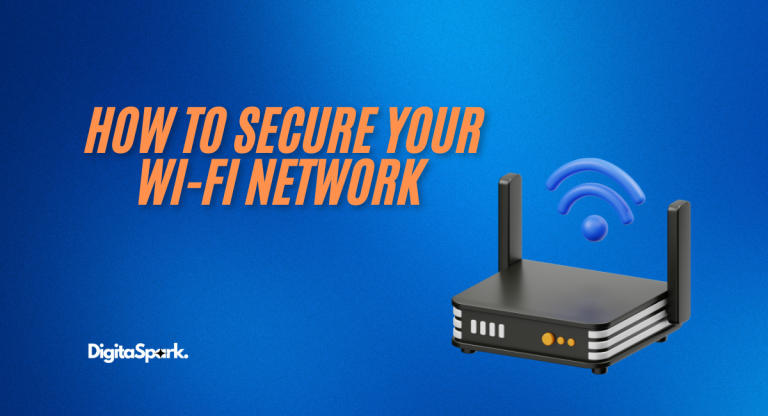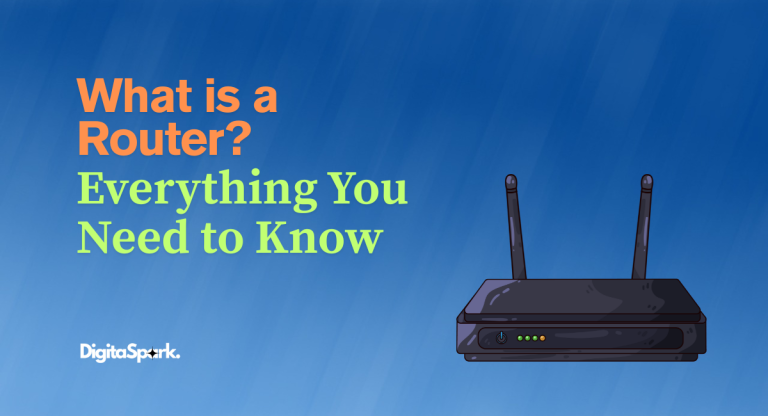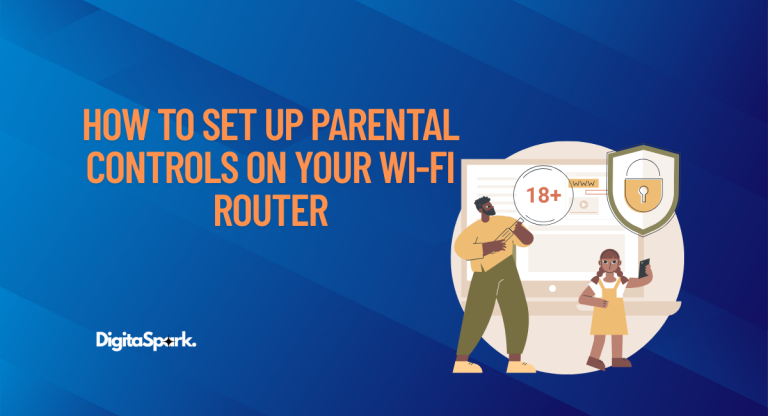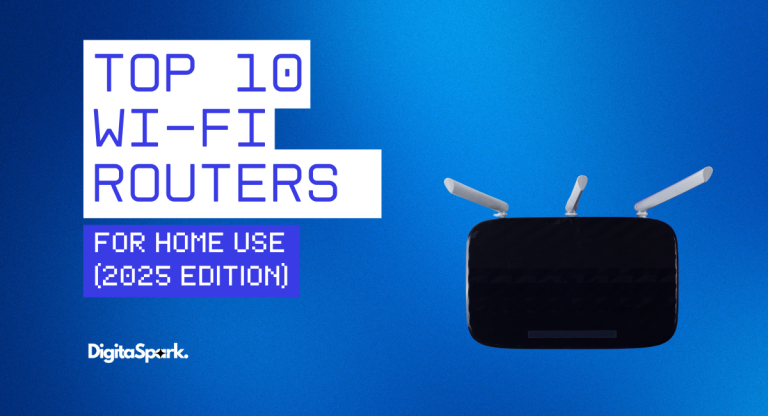WPA2 vs WPA3 in 2025 – What’s the Real Difference and Should You Care
Let’s be real—Wi-Fi has gone way beyond being a luxury. These days, it’s the invisible lifeline that powers pretty much everything we do. From scrolling through social media, taking Zoom calls, and binge-streaming shows, to controlling our smart lights and home security systems—it all relies on a solid, secure wireless connection.
But while most of us are laser-focused on getting the fastest speed or widest range when buying a router, there’s one part that often gets brushed under the rug: Wi-Fi security. It’s not until something fishy happens—like unfamiliar devices showing up on your network or your internet crawling suspiciously slow—that we even think about it.
And that’s where these mysterious acronyms like WPA2 and WPA3 come into play. You’ve probably seen them buried in your router settings or mentioned on the box of a new device. But what do they actually mean? Are they just buzzwords to make products sound more high-tech, or do they really matter in keeping your home network safe?
Let’s unpack it—all in plain, no-jargon English.
What Even Is WPA?
Alright, let’s start with the basics. WPA stands for Wi-Fi Protected Access—fancy name, simple idea. It’s basically the security protocol that keeps unwanted guests off your Wi-Fi and ensures your data isn’t floating around unprotected. Think of it as the digital lock on your network’s front door.
Now, WPA2 has been the go-to since the early 2000s. It introduced AES encryption, which was a huge leap in keeping Wi-Fi traffic safe. For a long time, WPA2 was solid. But let’s be honest—tech doesn’t stay still. As hackers got smarter, WPA2 started to show its age.
That’s where WPA3 comes in. Released in 2018, it was designed to address WPA2’s weak spots and step up security for our increasingly connected lives. And here in 2025? WPA3 isn’t just the “new thing.” It’s quickly becoming the must-have standard.
WPA2 vs WPA3: What’s Actually Different?
So, what’s the big deal? Why should you care about WPA3 if WPA2 has been working fine? Let’s break it down.
1. WPA3 Makes Your Wi-Fi a Lot Harder to Crack
WPA2 uses AES encryption, which is still pretty secure—but it has one major weak point. If someone manages to capture that initial “handshake” when your device connects to Wi-Fi, they can try to guess your password offline using automated tools. That means they could run thousands of guesses in minutes without even being connected to your network.
WPA3 fixes this with a new system called SAE (Simultaneous Authentication of Equals). Instead of reusing the same handshake every time, it creates a new, unique one for each connection attempt. That makes it practically impossible for hackers to launch a brute-force attack offline. If they want to try, they’ll have to do it in real-time—and guess what? Your router will block them after a few failed tries. Game over, hacker.
2. Forward Secrecy: Past Data Stays Private
Here’s a scary thought: if someone figures out your Wi-Fi password under WPA2, they could decrypt everything you’ve ever done on that network—emails, files, private messages—the whole package.
WPA3 shuts that down with something called forward secrecy. Basically, even if someone somehow learns your password later, they still can’t retroactively snoop on your old traffic. Your past data stays locked up tight.
3. Way Safer on Public Wi-Fi
We all love free Wi-Fi at coffee shops, airports, or hotels. But public networks can be a hacker’s playground. Under WPA2, every device shares the same encryption key, which means someone with the right tools could peek at your traffic.
WPA3 offers individualized encryption, meaning your phone, your laptop, your tablet—all get their own private key. So even if someone shady is sitting at the next table, they won’t see a thing you’re doing.
4. Setting Up Smart Devices Is (Finally) Less Annoying
Ever tried setting up a smart plug or light bulb and had to mess with confusing apps, press tiny reset buttons, or wonder if it’s even connected? Yeah, we’ve all been there.
WPA3 includes Wi-Fi Easy Connect, which lets you onboard devices using a QR code. Just scan it with your phone, and boom—it’s connected. No passwords, no drama. Perfect for devices with no screens.
Why WPA3 Matters Even More in 2025
We’re not just talking future-proofing here—WPA3 is built for the threats we’re dealing with right now. Here’s why it’s more important than ever:
Smart Homes = More Entry Points for Hackers
In 2025, our homes are packed with internet-connected gadgets: smart locks, baby cams, light switches, and even fridges. And a lot of those devices don’t have the horsepower to run strong encryption.
WPA3 is designed to help with that. It provides stronger security for low-power devices, making sure your smart toaster doesn’t become your Wi-Fi’s weakest link.
AI-Powered Attacks Are No Joke
Hackers today are using AI to find vulnerabilities faster than ever. They’re not just guessing passwords manually—they’re running automated attacks 24/7.
WPA2 has known flaws that AI can exploit. WPA3 is built to stand up against those modern threats with tougher encryption and better protection from guesswork-based attacks.
We’re All Mobile, and Public Wi-Fi Isn’t Going Anywhere
Whether you’re working from a coworking space, replying to emails at the airport, or binge-watching YouTube in a café, you’re probably using public Wi-Fi more than you think.
With WPA3, you get personal encryption, even in those shared spaces. That means your data stays private, even if dozens of people are on the same network.
Do You Need WPA3?
In a word: Yes—especially if your devices support it.
Most modern routers and new gadgets already do. If you’re buying a router in 2025, make sure it lists WPA3 support right on the box. That’s a green flag.
Still got older devices? No worries. Many routers offer a WPA2/WPA3 mixed mode, which lets your new stuff use WPA3 while still supporting your legacy gear on WPA2. It’s not perfect, but it’s a solid compromise until you upgrade everything.
Not Sure What You’re Using? Here’s How to Check:
- Open your web browser and type in 192.168.1.1 or 192.168.0.1.
- Log into your router with the username and password (usually found on a sticker underneath).
- Look for settings labeled Wi-Fi Security, Wireless, or Encryption.
- If WPA3 is available, switch to it. If not, check for a firmware update or consider upgrading your router.
Can WPA2 Still Be Safe?
Yes—but only if you’re careful.
- Use a strong password. No birthdays, pet names, or “123456.” Go with something long and complex.
- Keep your firmware updated. Manufacturers regularly patch bugs and security holes.
- Turn off WPS and UPnP. These features are convenient, but often targeted by hackers.
- Use a guest network. Let friends and visitors connect without risking your main devices.
- Check who’s connected. Log into your router once in a while and make sure you recognize every device.
Final Thoughts
WPA3 isn’t just a tech upgrade—it’s a shift in how we approach Wi-Fi security. It fixes the flaws of WPA2, keeps up with today’s cyber threats, and makes managing your home network easier and safer.
In a world where everything runs on Wi-Fi—from your lights to your life savings—security can’t be an afterthought. It needs to be baked in from the start.
So whether you’re setting up a brand-new network or just doing some digital spring cleaning, upgrading to WPA3 in 2025 isn’t optional—it’s smart, essential, and long overdue.
FAQs: WPA2 vs WPA3—Answers You Actually Want in 2025
Q1: Okay, what is WPA, and why should I care?
Think of WPA (Wi-Fi Protected Access) as the digital lock on your home’s internet. It keeps unwanted guests out and your personal stuff—like passwords, bank info, and baby monitor feeds—safe from prying eyes. WPA2 has been doing this job for a long time, but WPA3 is the new and improved version with much stronger security. In today’s world, it really matters.
Q2: So is WPA3 really better than WPA2, or just new tech hype?
No hype here—WPA3 is a legit upgrade. It shuts down a bunch of tricks hackers used to rely on, like guessing your Wi-Fi password a million times until they get it right. Plus, it does a better job of keeping your info private even on sketchy public Wi-Fi. It’s like going from a chain lock to a biometric deadbolt.
Q3: Will WPA3 work with my older gadgets?
Probably not directly, but here’s the good news: most modern routers let you turn on a WPA2/WPA3 mixed mode. That means newer devices can use the fancy WPA3 security, while your older stuff still connects via WPA2. It’s a solid workaround until you slowly upgrade your tech.
Q4: How do I check if my Wi-Fi is using WPA3 right now?
You don’t need to be a tech wizard—just do this:
- Open a browser and type in 192.168.1.1 or 192.168.0.1 to access your router’s settings.
- Log in (the username/password is probably on a sticker on your router).
- Look for “Wi-Fi Settings” or “Security” and see what’s listed under “Security Mode.”
If WPA3 is there, awesome—turn it on! If it’s not, check if your router has a firmware update. Still nothing? It might be time for an upgrade.
Q5: What if my stuff doesn’t support WPA3? Is WPA2 still okay?
WPA2 is still decent—but only if you lock it down right. That means
- Use a strong, random password (ditch the pet names and birthdays).
- Keep your router’s firmware updated.
- Turn off risky features like WPS and UPnP.
- Create a guest network for visitors.
- Check your device list once in a while for anything weird.
Q6: Will turning on WPA3 slow down my Wi-Fi?
Not really. Modern routers and devices can handle WPA3 just fine. Unless you’re rocking super old tech, you won’t notice any difference in speed. What you will notice is a big step up in peace of mind.
Q7: Is WPA3 only for people with smart homes and techy setups?
Nope! Whether you have smart light bulbs everywhere or just stream Netflix and scroll Instagram, WPA3 is for you. It’s not a fancy add-on—it’s the new normal for protecting your digital life.
Q8: Do I need to buy a whole new router for WPA3?
If your current router is a few years old and doesn’t support WPA3 even after a firmware update, it’s probably time for an upgrade. Thankfully, there are tons of affordable options in 2025 that come WPA3-ready out of the box.
Q9: Why is WPA3 better for public Wi-Fi?
Ever connected to Wi-Fi at a coffee shop and worried someone might be spying on your stuff? With WPA2, that fear is kinda valid—everyone shares the same encryption key. But WPA3 gives each device its own unique encryption, even on public networks. So even if the guy next to you is a hacker, he can’t snoop on your traffic.
Q10: Is WPA3 the end-all-be-all, or will something better come soon?
Nothing lasts forever, but WPA3 is built to handle the way we use Wi-Fi today—and tomorrow. It’s way more resilient against modern threats, including automated attacks and AI-powered hacking tools. Eventually, something newer will come along, but WPA3 is your best bet for the foreseeable future.

